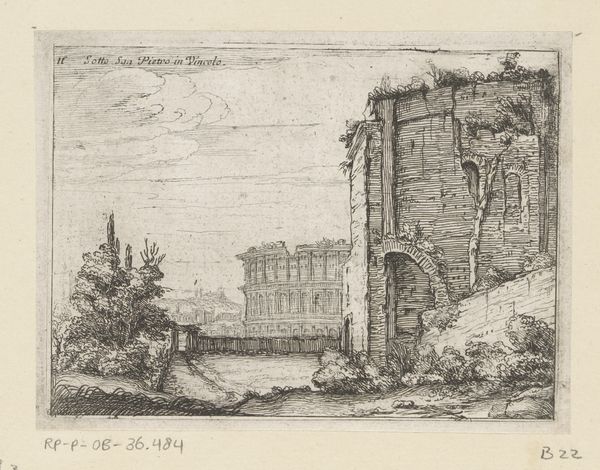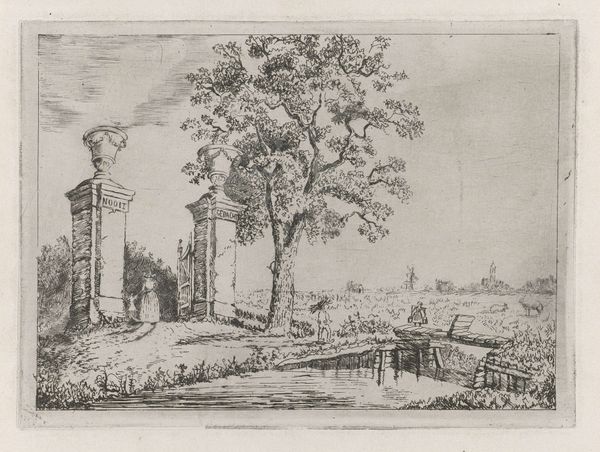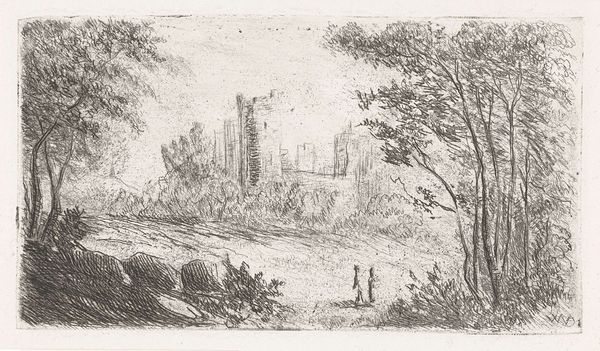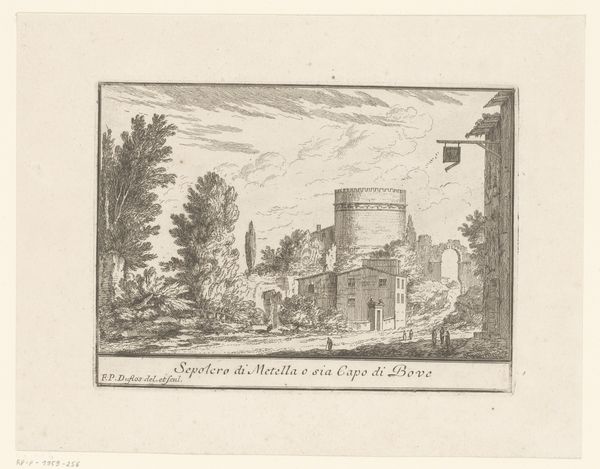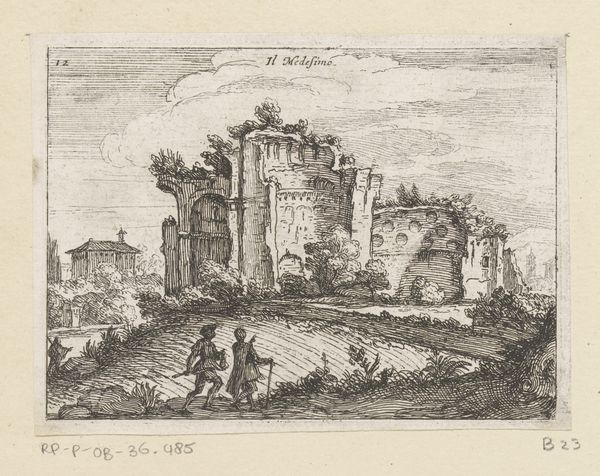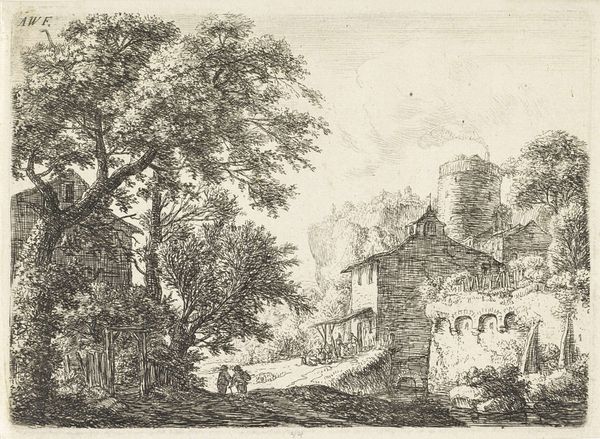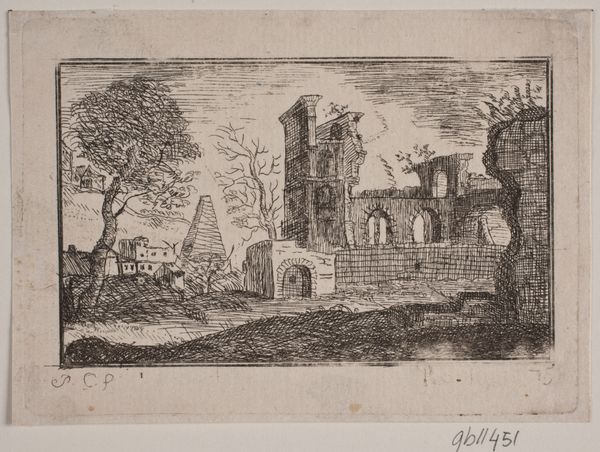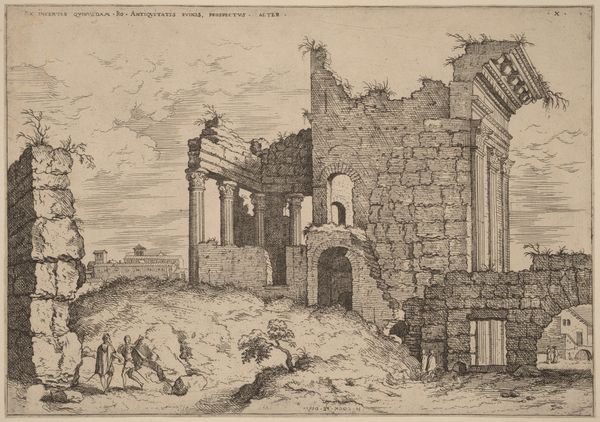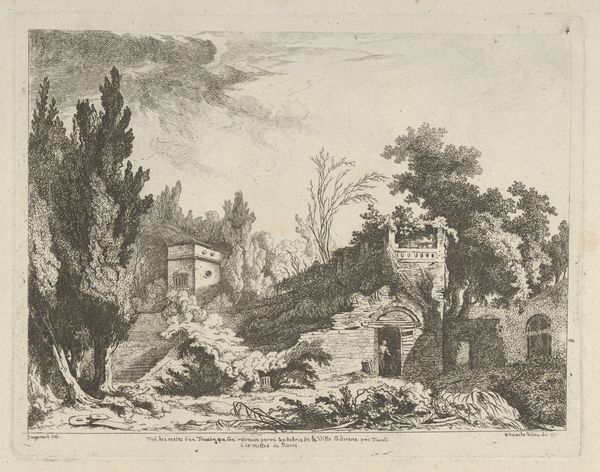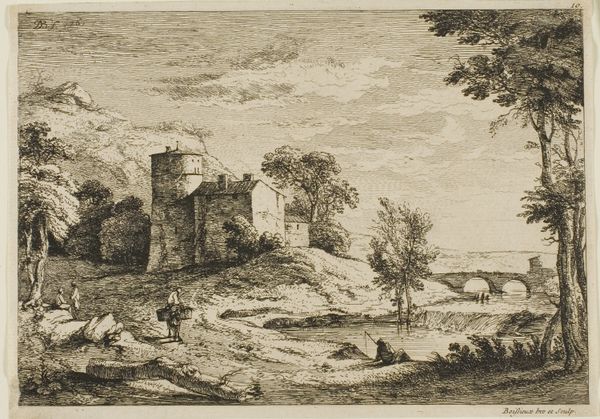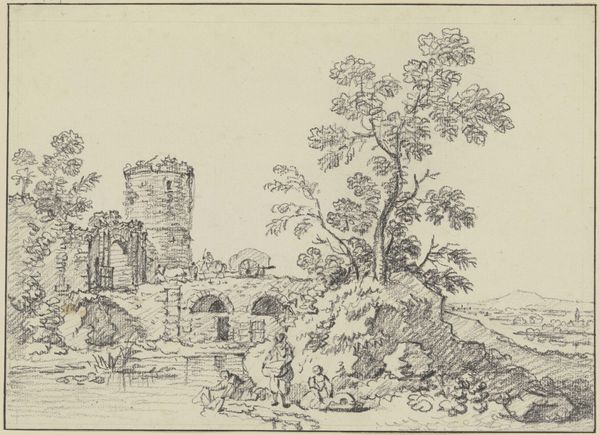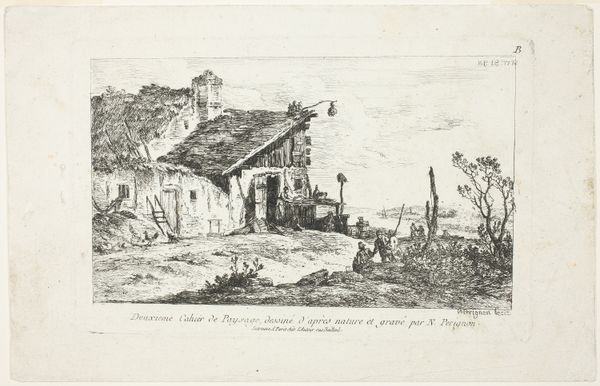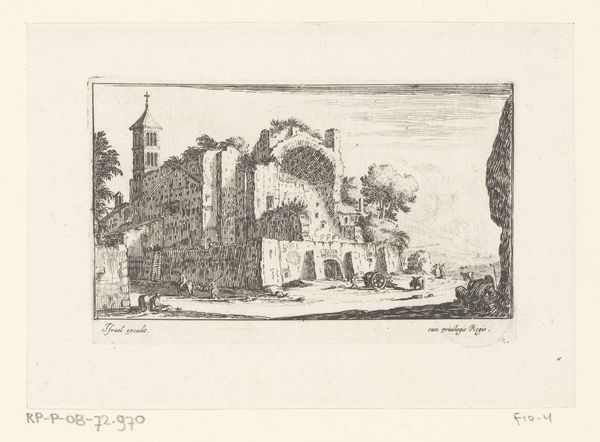
print, etching, architecture
#
baroque
# print
#
etching
#
landscape
#
etching
#
architecture
Dimensions: height 111 mm, width 148 mm
Copyright: Rijks Museum: Open Domain
Curator: This etching by Philothée François Duflos, titled “Graftombe van Cecilia Metella,” dates from around 1748. It shows the tomb, or what’s left of it, amidst a very active landscape. Editor: It feels elegiac, doesn't it? The contrast of the sturdy, worn mausoleum with the bustling life at its base really emphasizes a sense of time's passage and resilience. You get the impression of people making a life amongst history’s ruins. Curator: Absolutely. I am immediately struck by how this image captures a poignant moment in cultural memory. Consider the visual symbolism: a once-imposing mausoleum, now eroded, becoming almost one with nature. What do you see? What meanings emerge from decay, loss, and nature? Editor: It is difficult not to read it through a postcolonial lens. Who gets to decide which history matters, who gets to use whose land? Duflos situates it as almost an archaeological dig site where land is still at use, and perhaps by families not in charge of writing this tomb’s original history. The past here becomes part of the everyday life, claimed, re-imagined. It speaks to cycles of power and resilience. Curator: I find it very powerful how an artwork created within a certain context allows later reinterpretations to add new, unexpected significance. Do you think Duflos, working in the 18th century, anticipated those future associations? Editor: He must have been aware of the political dynamics embedded within ancient monuments and what those represent as powerful statements throughout time, and this awareness resonates even now. But I agree. Each era re-reads it with its own lens. Curator: It demonstrates how enduring visual representations evolve. This image echoes the enduring appeal of Roman classicism to those later looking for symbolic resonance across time. A ruined tomb is also something that connects deeply to Baroque aesthetics, particularly 'vanitas' imagery – what remains once power fades? Editor: Food for thought, indeed. A powerful testament to the layers of history and its intersection with the everyday lives of people. Curator: And a stark reminder that what may seem like a relic of the past is an ever-evolving emblem in our present.
Comments
No comments
Be the first to comment and join the conversation on the ultimate creative platform.
